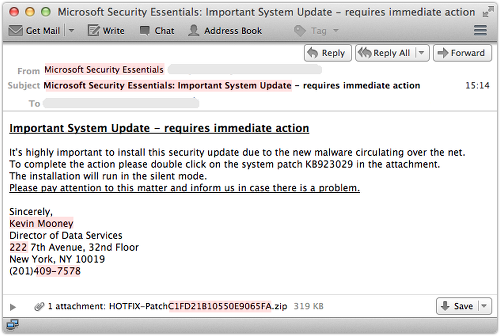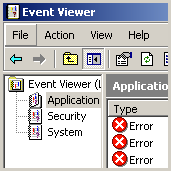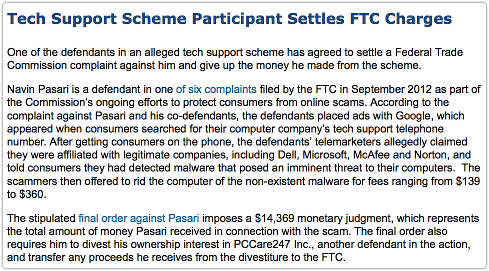Centrify’s Unified Identity Solution Secures Access To Enterprise Social Media Shared Accounts
SUNNYVALE, Calif. — Nov. 19, 2013 — Centrify Corporation, the leader in Unified Identity Services across data center, cloud and mobile, today announced that its Centrify User Suite, SaaS Edition (“Centrify for SaaS”) solution uniquely protects enterprises’ shared accounts, including social media accounts such as Twitter, from internal threats and unauthorized access, including access from users who have left the organization.
Today’s organizations are often forced to leverage shared access to social accounts on behalf of the company or brand. Losing control of these social accounts can be costly, embarrassing and can damage reputations. Common access control problems occur when employees share passwords with unauthorized users, are no longer authorized to access the accounts themselves, or leave the organization and take the shared username and password with them. The Centrify for SaaS Identity-as-a-Service (IDaaS) solution provides robust Active Directory- and/or cloud-based access and application management across any cloud application, including shared enterprise accounts for social media sites. Additionally, with built-in administrative views and reports that give instant views of which employees have access to shared social media accounts, Centrify for SaaS enables organizations for the first time to centralize control over access to cloud applications in the workplace.
For example, Centrify for SaaS vaults the passwords for social accounts so users never know or need to use the social app’s password. When an approved user needs to log in to one of these social accounts, they simply log in to the Centrify portal as themselves and click on the shared account. At no time do users have access to the shared password, and an IT administrator can even define when users are allowed to access the app, from what location, and can ask them for additional factors of authentication. When the employee leaves the organization or their role in the enterprise changes, administered access in Active Directory or Centrify’s cloud user service simply turns off shared account access as well.
“While key logger trojans and hacker groups do pose a real threat to enterprise accounts, organizations often forget about protecting themselves against the casual or malicious internal threat,” said Corey Williams, Centrify senior director of product management. “Not addressing the internal threat leaves organizations exposed to unauthorized internal access or malicious Twitter posts from casual, disgruntled or ex-employees who still have access to the organization’s social accounts. With Centrify, organizations can easily centralize all their social accounts and access without having to share passwords.”
With Centrify for SaaS, organizations solve password problems and secure the devices that are accessing cloud and mobile apps. End users benefit from Centrify’s Single Sign-on (SSO) and self-service features that let them locate, lock or wipe their mobile devices, as well as reset their Microsoft Active Directory passwords. IT benefits from Centrify’s easy-to-deploy, cloud-based service that delivers centralized access control and visibility to SaaS app usage and integrated mobile application management with seamless integration to Active Directory or Centrify’s cloud user service. Centrify for SaaS decreases the cost of managing SaaS apps and mobile devices while at the same time improving security and compliance, as well as user adoption, satisfaction and productivity.
About Centrify
Centrify provides Unified Identity Services across the data center, cloud and mobile that results in one single login for users and one unified identity infrastructure for IT. Centrify’s solutions reduce costs and increase agility and security by leveraging an organization’s existing identity infrastructure to enable centralized authentication, access control, privilege management, policy enforcement and compliance. Centrify customers typically reduce their costs associated with identity lifecycle management and compliance by more than 50%. With more than 5,000 customers worldwide, including approximately half of the Fortune 50 and more than 60 Federal agencies, Centrify is deployed on more than one million server, application and mobile device resources on premise and in the cloud. For more information about Centrify and its solutions, call (408) 542-7500, or visit http://www.centrify.com/.
Article source: http://www.darkreading.com/management/centrifys-unified-identity-solution-secu/240164206

 In 2007 the UK gave the go-ahead to the US’s National Security Agency (NSA) to snoop on innocent Britons not suspected of any wrongdoing, new documents from NSA whistleblower Edward Snowden show.
In 2007 the UK gave the go-ahead to the US’s National Security Agency (NSA) to snoop on innocent Britons not suspected of any wrongdoing, new documents from NSA whistleblower Edward Snowden show. The 2007 NSA memo, titled “Collection, Processing and Dissemination of Allied Communications”, says that Britons’ mobile phone and fax numbers, emails and IP addresses collected in surveillance dragnets are being stored in databases and can be made available to other members of the US intelligence and military community.
The 2007 NSA memo, titled “Collection, Processing and Dissemination of Allied Communications”, says that Britons’ mobile phone and fax numbers, emails and IP addresses collected in surveillance dragnets are being stored in databases and can be made available to other members of the US intelligence and military community.



 4. He’ll get you to open the Windows Event Viewer.
4. He’ll get you to open the Windows Event Viewer.